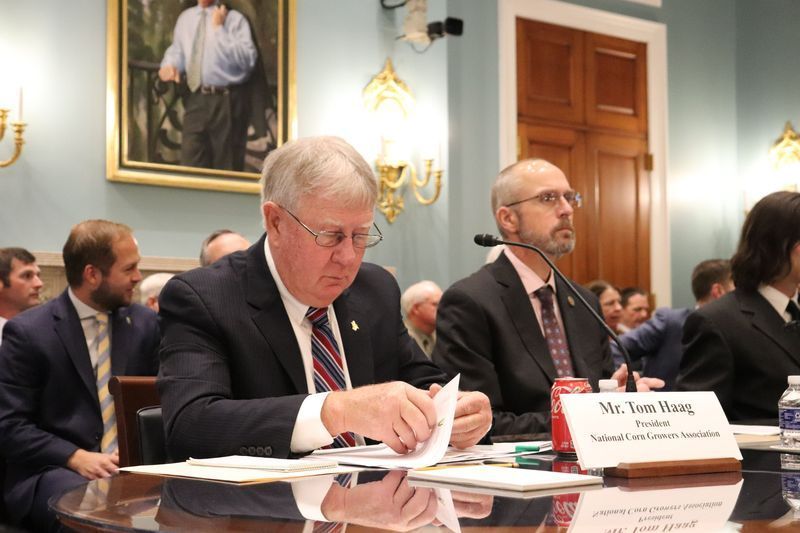Corn Growers Are Heard Through Congressional Hearings

Spring is proving to be a busy time between corn planting and grower leaders taking full advantage of every opportunity to talk about our priorities for the farm bill.
The farm bill, which governs many of the U.S. Department of Agriculture’s agricultural and food programs, is set to expire at the end of September 2023, providing policymakers with an opportunity to review and update existing programs.
NCGA, corn state associations and grower members are working closely with policymakers to ensure the bill addresses the current and future needs of corn growers.
Farm Bill Priorities
When I was recently invited to testify about producer perspectives on the farm bill, I was happy to fly to Washington, D.C., and speak before the House Agriculture General Farm Commodities, Risk Management, and Credit Subcommittee. Less than a week later, NCGA’s First Vice President Harold Wolle also shared corn grower views on the farm safety net as he testified in front of the Senate Agriculture Subcommittee on Commodities, Risk Management, and Trade.
Harold and I urged members of the Ag Committees and Congress to:
- Protect federal crop insurance;
- Strengthen the producer safety net;
- Bolster U.S. international market development efforts; and
- Support voluntary conservation programs.
Corn Grower Recommendations
When I was asked about the potential impact should cuts be made to crop insurance, I expressed what a major disaster that would be for corn growers. Federal crop insurance has a proven track record of helping producers quickly respond to natural disasters. And that’s why NCGA broadly supports increasing its affordability.
I also made recommendations for improving the Commodity Title, including the Agriculture Risk Coverage and Price Loss Coverage programs. NCGA supports continuing and improving both programs, which provide eligible growers protection during times of decreased revenue or prices. Our farm bill recommendations seek to make these USDA programs more effective and responsive through strategic investments and policy enhancements.
I also had an opportunity to mention the need to expand international markets by investing in trade promotion programs included in the Trade Title of the bill that boost U.S. agricultural exports and help agriculture and related businesses in rural America. Additionally, I touched on how NCGA supports multiple initiatives in the Conservation Title to make the existing working land conservation programs more effective.
After the Hearing
Our work does not stop at the end of these hearings. While in D.C., I met with Rep. Angie Craig (D-Minn.) and had meetings with leaders at the U.S. Department of Agriculture, including the administrator of the Farm Service Agency, to share the perspective of corn growers.
It was an honor to testify on behalf of NCGA and corn farmers throughout the country. My goal was to let my voice echo those who could not be there and represent those who work so hard for America’s crop. I know many corn growers are participating in congressional farm bill listening sessions, roundtables, and meetings with their respective members of Congress. As the debate on the farm bill continues, our efforts will only intensify. Stay tuned!
Haag is president of the Corn Board of the National Corn Growers Association.






